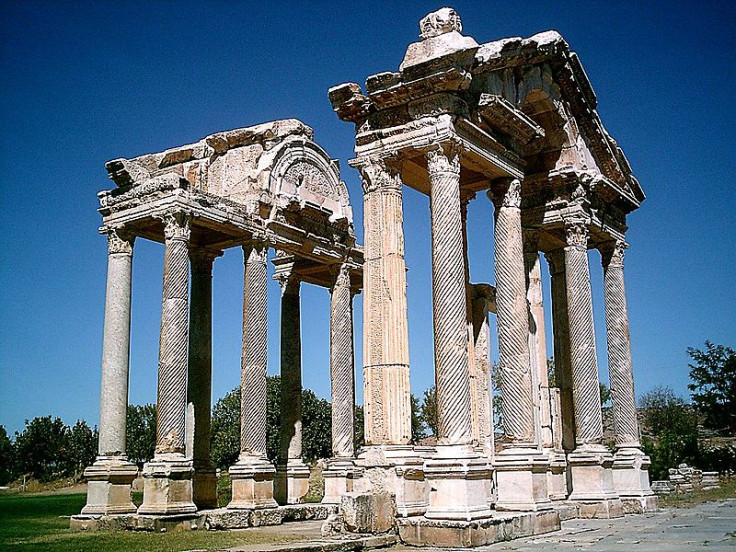Roman Empire: Ancient graffiti depicts gladiators, sex and religion from Greek city of Aphrodisias

Ancient graffiti scrawled into stone which depicts everyday life in the old Greek city of Aphrodisias has been discovered.
The drawings were found in the ancient city which is now located in modern day Turkey and are up to 1,500 years old. They reveal aspects of day-to-day happenings such as gladiator battles, religion, chariot racing and even sex.
In a lecture given at Toronto's Royal Ontario Museum, Angelos Chaniotis, professor at the Institute for Advanced Study, said: "Hundreds of graffiti, scratched or chiselled on stone, have been preserved in Aphrodisias — more than in most other cities of the Roman East (an area which includes Greece and part of the Middle East)," according to Live Science.
"Graffiti are the products of instantaneous situations, often creatures of the night, scratched by people amused, excited, agitated, perhaps drunk. This is why they are so hard to interpret. But this is why they are so valuable. They are records of voices and feelings on stone."
#archaeology Gladiator fights revealed in ancient graffiti in Aphrodisias #Caria http://t.co/qPFVHKNO7F pic.twitter.com/VQfdPnhQaA
— Following Hadrian (@carolemadge) June 16, 2015Aphrodisas was under the rule of the Roman Empire, but its inhabitants spoke Greek, which Chaniotis says supports theories that Greek-speaking regions embraced the gladiator battle culture that the Romans brought.
"This abundance of images leaves little doubt about the great popularity of the most brutal contribution of the Romans to the culture of the Greek east," he said.
Religion was another hot topic in the graffiti, with three major faiths the subject of the drawings with the followers of each religion doodling to compete against each other. Chaniotis added: "Christians, Jews and a strong group of philosophically educated followers of the polytheistic religions competed in Aphrodisias for the support of those who were asking the same questions: Is there a god? How can we attain a better afterlife?"
However, the artists stopped their scribblings at around 500AD – almost the same time that Justinian was at the helm of the Byzantine Empire and banned Jewish practices as well as the worshipping of more than one God.
© Copyright IBTimes 2025. All rights reserved.






















